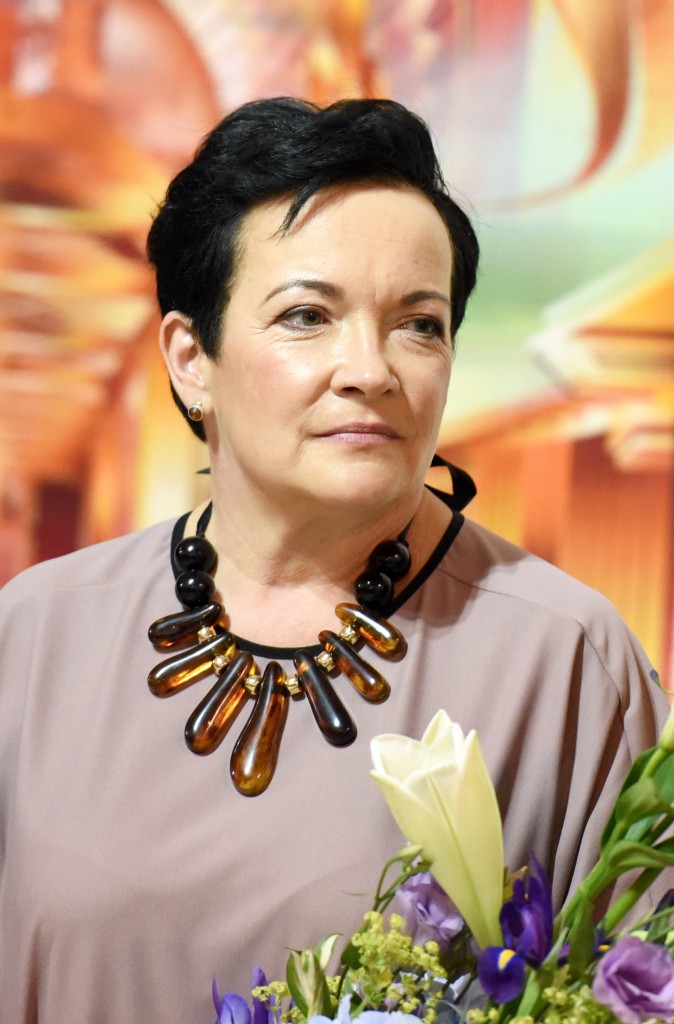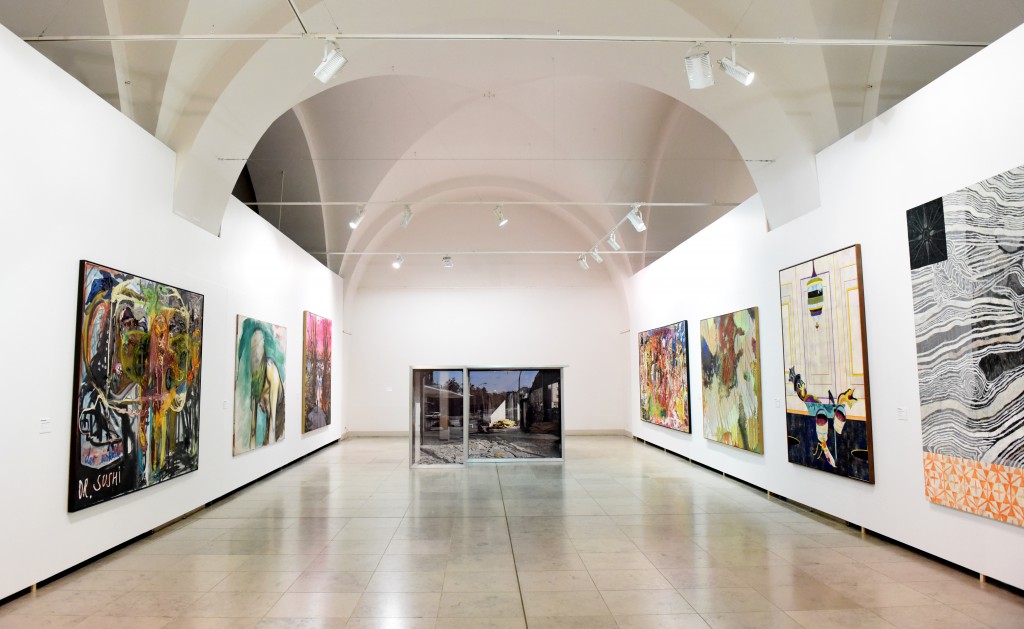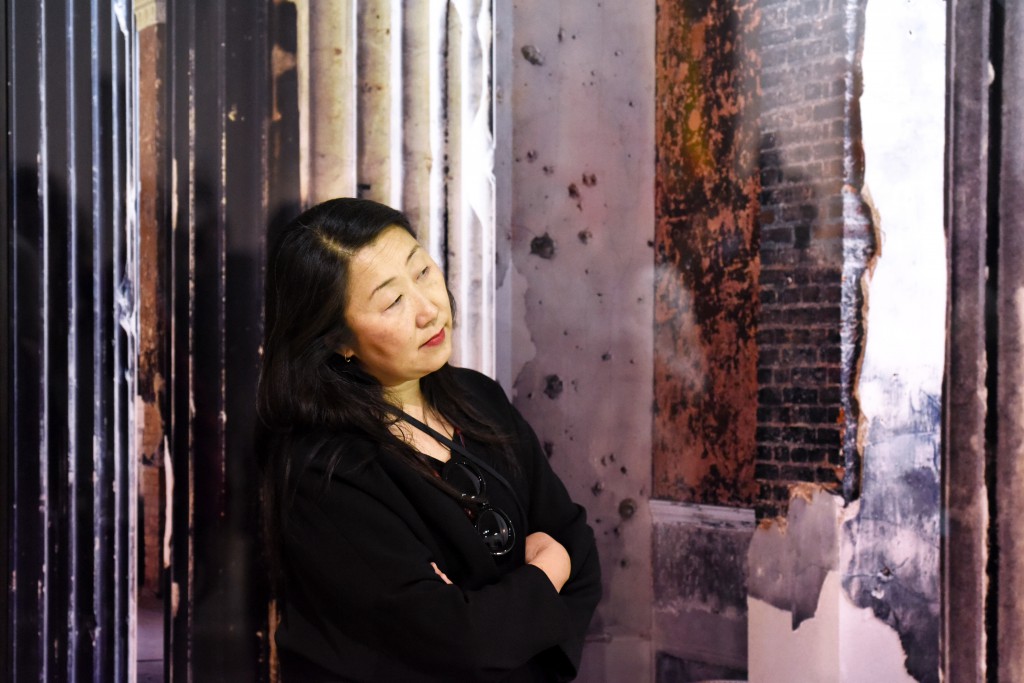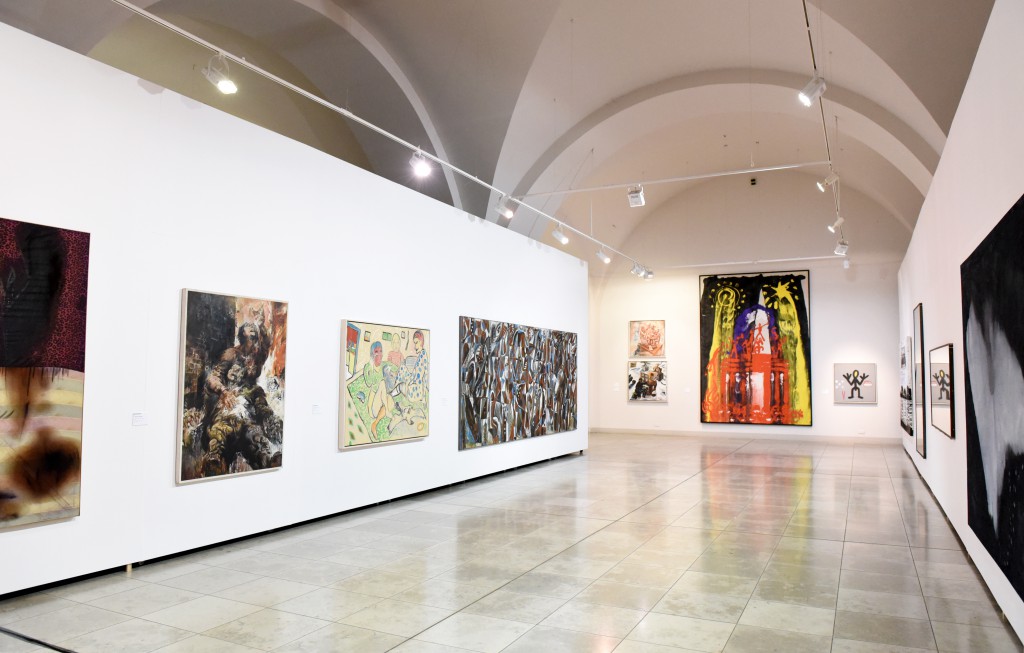The Exhibition “Elective Affinities” marks a very special occasion in the cultural relations between Latvia and Germany as it is the very first comprehensive display of German contemporary art in the country of Latvia.
An impressive selection of 77 art works by 53 artists, including the biggest names of the German Art scene since the late 1960ies, is presented in the ARSENĀLS exhibition halls of the Latvian National Museum in Riga. As the Senior-Curator of the ARSENĀLS exhibition halls Astrīda Rogule sat down with us to tell us about the exceptionality of this show and how the Latvian audience reacted on this premier venture.

Dear Astrīda, please describe the reaction of the Latvian public towards the show.
After the opening of an exhibition the artists and the curator are always a bit worried about how visitors respond. Will the main point or underlying message of the exhibition reach the minds and hearts of the viewers?
Speaking for the staff of the Latvian National Museum of Art, we are pleasantly surprised that the visitor numbers for the first three exhibition working weeks have been quite despite the season. A really positive surprise has been the high amount of young Latvians among the visitors, and people are writing about their experiences in the exhibition Elective Affinities or their plans to visit the exhibition on Facebook or Twitter.
I like to watch the visitors and study their reactions. This exhibition is special, because visitors spend more time in the exhibition, not because 77 artworks are a big number, but because the quality of the experience. All the artworks selected by the curator of the exhibition, Dr. Mark Gisbourne, meaningfully reflect the concept. It takes time to absorb the complex relationships between the works, which are suggested by the curator.

How does the exhibition benefit the younger art scene? Are there many artists coming to see this overview of German art since the late 1950s?
I have seen many generations of Latvian artists in the ARSENĀLS exhibition halls during the last few weeks. And all of the artists I met told me that it was worth seeing. Some of them are familiar with the German art scene and have close links with German artists. Some know about the development of German art from studying art history or books and media. Each set of people has different approaches to the exhibition and take different things away from their visit.
It is a great pity that the exhibition will be over before the school year begins in our art schools, because this could have brought more visitors with specifically artistic interests. Perhaps you know that in our country after-school art schools are extremely popular. As a country with about 2 million inhabitants, we have more than 30 000 children attending art and music schools.
I do hope that these children will have chance to see the exhibition together with their families. This exhibition of German art can give young visitors a great deal: 1) a sense of freedom, by this I mean, the inner freedom to express one’s thoughts and personal position, the freedom to apply different technical tools, to use the space and media; 2) demonstrating that the world is round and small and that people in neighboring and/or faraway countries have the same problems and issues to discuss as we do here; and 3) artists are a part of society and therefore have to be socially active by responding to the world’s agenda.

Tomorrow, our German Cultural Minister Monika Grütters is visiting Riga and the ARSENĀLS. What impact does this kind of visit have on the perception of the show by the local public?
I think that the visit of the German Cultural Minister Dr. Monika Grütters will be a perfect chance to draw attention to this big event in German and Latvian culture. In addition, the exhibition could serve as a catalyst for new projects, especially since in 2018 all three neighbors—Latvia, Lithuania, and Estonia—will celebrate the centenary of their independence.
For the public, both international and local, this offers a good reason to come to the exhibition—to see why the Minister has paid such an honor by coming to visit it.

Are you involved with the Latvian Pavilion at the upcoming Venice Biennale in 2017?
Yes, I am. In 2017 Latvia will be represented by Miķelis Fišers’ project, Raižu struktūra / Structure of Worries. Inga Šteimane will be the curator; production duties will be undertaken by the “Cultural Project Agency Indie”; and Daiga Rudzāte is the commissioner. My responsibilities are to set up and implement communication and education programs for the visitors.
Thank you very much for this conversation!
Astrīda Rogule interviewed by Ute Weingarten